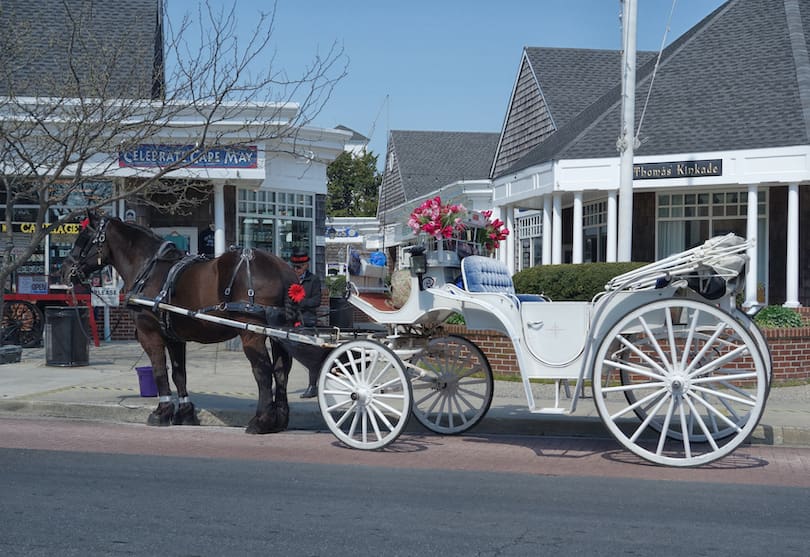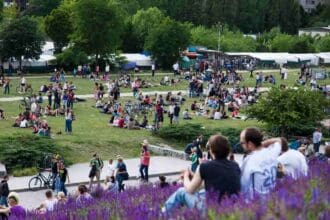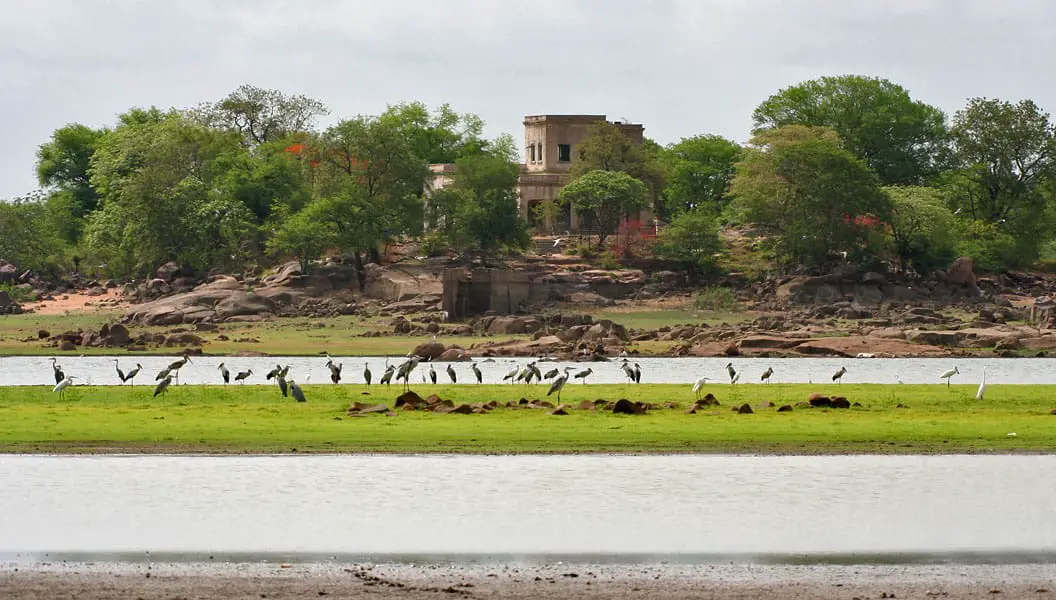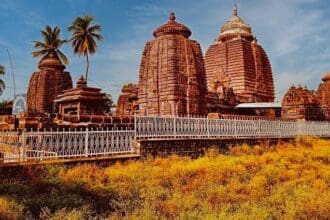West Bengal, a state located in the eastern part of India (Places To Visit In West Bengal), is a treasure trove of cultural diversity, historical significance, and breathtaking natural beauty. From the majestic Himalayan ranges in the north to the serene beaches of the Sundarbans in the south, this vibrant state offers something for every kind of traveler. Whether you’re an adventurer seeking thrilling escapades, a history buff exploring ancient ruins, or someone looking to immerse yourself in art, music, and cuisine, West Bengal has it all. In this article, we will take you on a journey through the top 15 places to visit in West Bengal , ensuring that your trip is nothing short of extraordinary.
1. Darjeeling: The Queen of the Hills
Why Darjeeling Stands Out
Nestled in the lap of the Eastern Himalayas, Darjeeling is often referred to as the “Queen of the Hills.” Known for its lush tea gardens, panoramic views of the Kanchenjunga range, and colonial charm, this hill station is a must-visit destination in West Bengal. Its cool climate, combined with stunning vistas and rich cultural heritage, makes it a favorite among travelers from around the world.
Key Attractions
The Darjeeling Himalayan Railway , a UNESCO World Heritage Site, is one of the town’s most iconic attractions. This narrow-gauge train ride takes you through scenic landscapes, offering a glimpse into the region’s rich history. The toy train chugs along winding tracks, passing through dense forests, quaint villages, and picturesque valleys. It’s not just a mode of transportation but an experience in itself, transporting you back to the days of British colonialism.
Another highlight is the Tiger Hill , where you can witness a breathtaking sunrise over the snow-capped peaks of Kanchenjunga. Arrive before dawn to secure a good spot, and watch as the first rays of sunlight bathe the mountains in hues of gold and orange. On clear days, you might even catch a glimpse of Mount Everest in the distance.
For tea enthusiasts, a visit to the Happy Valley Tea Estate is a must. Established in 1854, this estate is one of the oldest and most renowned tea gardens in Darjeeling. Here, you can learn about the intricate process of tea production, from plucking the leaves to processing and packaging them. Guided tours allow you to explore the factory and interact with workers, gaining insight into the labor-intensive yet rewarding craft of tea-making. Don’t miss the opportunity to sample some of the world’s finest teas, including the famous Darjeeling First Flush.
Nature lovers will also appreciate the Padmaja Naidu Himalayan Zoological Park , which is home to endangered species like the red panda and snow leopard. The zoo focuses on conservation efforts and breeding programs, playing a crucial role in protecting these vulnerable animals. Located at an altitude of 7,000 feet, the park provides a natural habitat for its residents, making it a unique and educational experience.
Seasonal Highlights
Each season in Darjeeling brings its own unique charm. Spring (March to May) is particularly enchanting, as the rhododendrons burst into bloom, painting the hillsides with vibrant shades of pink, red, and purple. Winter (November to February) brings chilly weather and occasional snowfall, creating a magical atmosphere perfect for cozy getaways. Summers are mild compared to the plains, making Darjeeling a popular retreat during the hotter months.
Travel Tip: Book accommodations well in advance, especially during peak tourist seasons like spring and winter. Many hotels and guesthouses fill up quickly due to high demand.
Nearby Hotels and Restaurants
Luxury travelers can indulge in the opulence of Mayfair Darjeeling , a heritage hotel perched on a hilltop, offering stunning views of the surrounding mountains. For those traveling on a budget, Hotel Dekeling provides comfortable rooms at affordable rates without compromising on quality.
When it comes to dining, Darjeeling offers a delightful mix of local and international cuisines. Head to Kunga Restaurant , a beloved establishment known for its authentic Tibetan and Nepalese dishes like momos (steamed dumplings), thukpa (noodle soup), and tingmo (steamed bread). If you’re craving something more familiar, Glenary’s Bakery & Café serves delicious pastries, sandwiches, and coffee in a charming colonial setting.
2. Kolkata: The Cultural Capital of India
Exploring Kolkata’s Rich Heritage
Kolkata, formerly known as Calcutta, is the cultural and intellectual hub of West Bengal. This bustling metropolis is a melting pot of art, literature, music, and cuisine. From its colonial-era architecture to its vibrant festivals, Kolkata exudes a unique charm that captivates visitors. Often referred to as the “Cultural Capital of India,” the city has been a cradle of creativity and innovation throughout history.
Key Attractions
Start your journey at the Victoria Memorial , an iconic white-marble monument that stands as a symbol of Kolkata’s colonial past. Built in memory of Queen Victoria, this architectural marvel houses a museum showcasing artifacts from British India, including paintings, manuscripts, and sculptures. The sprawling gardens surrounding the memorial provide a serene escape from the city’s chaos.
No visit to Kolkata would be complete without seeing the Howrah Bridge , one of the busiest cantilever bridges in the world. Connecting the city to its twin, Howrah, this engineering masterpiece spans the Hooghly River and serves as a lifeline for millions of commuters. Watching the sunset over the river from the bridge is an unforgettable experience.
Art lovers should not miss the Indian Museum , the oldest and largest museum in India. Founded in 1814, it features six sections—Art, Archaeology, Anthropology, Geology, Zoology, and Botany—housing exhibits ranging from ancient sculptures to rare fossils. The Egyptian mummy and Gandhara sculptures are among the museum’s prized possessions.
For a spiritual experience, visit the Dakshineswar Kali Temple , dedicated to Goddess Kali. Located on the banks of the Hooghly River, this temple complex is steeped in mythology and devotion. Adjacent to it lies the Belur Math , the headquarters of the Ramakrishna Mission. Designed to reflect a fusion of Hindu, Islamic, and Christian architectural styles, the math promotes universal harmony and peace.
Culinary Delights
Kolkata is a paradise for food lovers, offering a tantalizing array of flavors and aromas. Savor traditional Bengali sweets like Rasgulla , Mishti Doi (sweet yogurt), and Sandesh (cottage cheese-based dessert). Street food is another highlight, with delicacies such as Kathi Rolls (spiced meat wrapped in paratha), Phuchka (spicy water-filled snacks), and Jhal Muri (puffed rice tossed with spices and vegetables) being crowd favorites.
For fine dining, head to 6 Ballygunge Place , a restaurant housed in a restored colonial bungalow. Their menu blends traditional Bengali recipes with modern techniques, resulting in dishes that are both comforting and innovative. Another must-try is Peter Cat , famous for its Chelo Kebabs and Continental dishes served in a cozy ambiance.
Travel Tip: Use public transport like trams and metro trains to navigate the city efficiently. Auto-rickshaws and app-based cabs are also readily available.
Nearby Hotels and Restaurants
Luxury travelers can stay at The Oberoi Grand , a heritage hotel steeped in elegance and luxury. With its grand architecture, impeccable service, and central location, it’s a favorite among discerning guests. Budget-friendly options include Hotel Hindusthan International , which offers clean and comfortable rooms at reasonable prices.
For dining, Kolkata boasts a wide variety of restaurants catering to different tastes. Oh! Calcutta specializes in authentic Bengali cuisine, serving everything from fish curries to vegetarian thalis. For a taste of global flavors, Mainland China offers exquisite Chinese dishes in a sophisticated setting.
3. Sundarbans: The Land of the Royal Bengal Tiger
Why Sundarbans Is Unique
The Sundarbans, a UNESCO World Heritage Site, is the world’s largest mangrove forest and home to the elusive Royal Bengal Tiger. Spread across an area of approximately 10,000 square kilometers, this biosphere reserve is a haven for wildlife enthusiasts and nature lovers. What sets the Sundarbans apart is its unique ecosystem, where freshwater rivers meet the salty waters of the Bay of Bengal, creating a habitat teeming with biodiversity.
Activities to Enjoy
Exploring the Sundarbans is best done via boat safaris, which take you deep into the heart of the mangroves. These guided tours offer opportunities to spot tigers, crocodiles, deer, and a variety of bird species. While tiger sightings are rare, the thrill of venturing into their territory adds an element of adventure to your trip.
The Sajnekhali Bird Sanctuary is particularly popular among birdwatchers, housing species like kingfishers, herons, eagles, and egrets. During migratory seasons, the sanctuary becomes a temporary home for exotic birds from Siberia and Central Asia, adding to its allure.
For a deeper connection with nature, visit the Sundarbans National Park , where guided tours provide insights into the ecosystem and conservation efforts. The Netidhopani Watchtower offers panoramic views of the surrounding forests and waterways, making it an ideal spot for photography enthusiasts.
Another fascinating aspect of the Sundarbans is its indigenous communities, who have lived in harmony with nature for centuries. Interacting with villagers and learning about their sustainable practices can be an enriching experience.
Best Time to Visit
The best time to visit the Sundarbans is between October and March, when the weather is pleasant and wildlife sightings are more frequent. Avoid visiting during the monsoon season (June to September), as heavy rains can make travel difficult and increase the risk of flooding.
Travel Tip: Carry binoculars and a camera with a good zoom lens for wildlife photography. Wear lightweight, breathable clothing and apply insect repellent to protect against mosquitoes.
Nearby Hotels and Restaurants
Stay at Sunderban Tiger Camp , an eco-friendly resort offering comfortable accommodations and guided tours. Nestled amidst lush greenery, it provides a peaceful retreat after a day of exploration. For budget travelers, Sunderban Jungle Camp offers basic amenities and proximity to key attractions.
When it comes to dining, the Sundarbans may not have many upscale restaurants, but local eateries serve delicious Bengali dishes made with fresh ingredients. Try Ilish Macher Jhol (Hilsa fish curry), Chingri Malai Curry (prawn cooked in coconut milk), and Bhetki Paturi (fish steamed in banana leaves) for an authentic taste of the region.
4. Kalimpong: A Serene Hill Station
What Makes Kalimpong Special
Kalimpong, located near Darjeeling, is a quieter alternative for those seeking peace and tranquility. Surrounded by rolling hills, orchids, and monasteries, this hill station offers a perfect escape from the hustle and bustle of city life. Its laid-back vibe, coupled with stunning natural beauty, makes it a hidden gem in West Bengal.
Key Attractions
Visit the Zang Dhok Palri Phodang Monastery , perched atop Durpin Hill, for stunning views and spiritual solace. This Buddhist monastery houses sacred texts and relics, attracting pilgrims and tourists alike. The serene atmosphere and intricate murals make it a place of reflection and reverence.
The Deolo Hill , the highest point in Kalimpong, is another must-visit spot, offering panoramic vistas of the Teesta River and surrounding valleys. A small temple dedicated to Lord Shiva sits atop the hill, adding a touch of spirituality to the scenic beauty. Visitors often come here to enjoy picnics or simply soak in the tranquility.
Nature lovers will enjoy the Dr. Graham’s Homes , a historic institution surrounded by lush greenery. Founded in 1900 by Reverend Dr. John Anderson Graham, this school-cum-orphanage provides education and shelter to underprivileged children. The campus, spread across acres of land, features beautiful gardens, playgrounds, and heritage buildings.
The Pine View Nursery is also worth a visit, showcasing a wide variety of flora native to the region. You’ll find exotic flowers, medicinal plants, and ornamental shrubs, making it a paradise for botany enthusiasts.
Local Markets
Kalimpong’s markets are famous for their handicrafts, including handwoven fabrics, wooden carvings, and Tibetan artifacts. Don’t forget to pick up some locally grown honey and spices as souvenirs. The Kalimpong Market is bustling with activity, offering everything from fresh produce to handmade jewelry.
Travel Tip: Hire a local guide to explore hidden gems and lesser-known trails. They can provide valuable insights into the region’s culture and history.
Nearby Hotels and Restaurants
Stay at Summit Barsana Resort & Spa , offering luxurious amenities and breathtaking views of the Himalayas. For budget travelers, Hotel Sonar Bangla provides clean and comfortable rooms at affordable rates.
For dining, Momos Point serves delicious Tibetan dumplings and other local specialties. If you’re in the mood for something more elaborate, Himalayan Java offers a fusion menu featuring burgers, pizzas, and coffees in a cozy café setting.
5. Shantiniketan: The Abode of Peace
A Tribute to Rabindranath Tagore
Founded by Nobel laureate Rabindranath Tagore, Shantiniketan is a small town that embodies the essence of art, culture, and education. It is home to Visva-Bharati University , an institution envisioned by Tagore himself as a place where students could learn in harmony with nature.
Key Attractions
Visit the Upasana Griha , a prayer hall designed by Tagore, and the Kala Bhavan , an art school renowned for its innovative teaching methods. Both institutions reflect Tagore’s vision of blending academics with creativity and spirituality.
During spring, the annual Poush Mela festival celebrates rural traditions with music, dance, and crafts. Held in December, this three-day event attracts artists, artisans, and performers from across the country. Visitors can shop for handmade products, enjoy folk performances, and savor traditional Bengali cuisine.
The Chhatimtala , a sacred grove where Tagore’s ashes were scattered, is a place of reflection and reverence. Nearby, the Kankalitala Temple attracts pilgrims seeking blessings from Goddess Shoshthi, believed to protect children from evil spirits.
Artistic Vibes
Shantiniketan is a hub for artisans, and you can purchase handmade crafts, paintings, and textiles directly from local artists. Participate in pottery workshops or attend cultural performances to immerse yourself in the creative spirit of the town. The Sriniketan Rural Reconstruction Centre , established by Tagore’s son Rathindranath, promotes sustainable development and showcases rural crafts.
Travel Tip: Plan your visit during festivals like Poush Mela or Basanta Utsav (spring festival) for a truly immersive experience. These events offer a glimpse into the vibrant cultural tapestry of Shantiniketan.
Nearby Hotels and Restaurants
Stay at The Elgin Fairlawn , a charming boutique hotel located within walking distance of Visva-Bharati University. For budget travelers, Hotel Priyadarshini offers simple yet comfortable accommodations.
For dining, Anandam serves authentic Bengali thalis and vegetarian dishes. Another option is Ami O Shyama , a cozy eatery specializing in traditional sweets and snacks.
6. Digha: A Beach Lover’s Paradise
Discovering Digha’s Coastal Beauty
Digha, located along the Bay of Bengal, is one of West Bengal’s most popular beach destinations. With its golden sands, clear waters, and laid-back vibe, it’s perfect for a relaxing vacation. Whether you’re looking to unwind, indulge in water sports, or simply enjoy the sound of waves crashing against the shore, Digha has something for everyone.
Activities to Enjoy
Spend your days sunbathing, swimming, or indulging in water sports like jet skiing, parasailing, and banana boat rides. Adventure seekers can try snorkeling or scuba diving to explore the underwater world. Several operators offer packages that include equipment rental and professional instructors, ensuring a safe and enjoyable experience.
Visit the Marine Aquarium and Research Centre , which showcases marine life native to the region, including sharks, turtles, and colorful fish. The aquarium is particularly popular among families, as it provides an educational and entertaining outing for children.
For a romantic evening, take a stroll along the New Digha Beach , illuminated by lanterns and dotted with cozy shacks serving fresh seafood. Watch the sunset paint the sky in hues of orange and pink while enjoying a plate of prawn fry or fish curry.
Best Time to Visit
The best time to visit Digha is between October and March, when the weather is pleasant and suitable for outdoor activities. Avoid visiting during the monsoon season (June to September), as heavy rains can disrupt travel plans and make the beaches unsafe.
Travel Tip: Carry sunscreen, sunglasses, and a hat to protect yourself from the sun. Bring a pair of flip-flops or sandals for easy movement on the sandy shores.
Nearby Hotels and Restaurants
Stay at Tropicana Resort , offering beachfront accommodations with direct access to the sea. For budget travelers, Hotel Sea Palace provides clean and comfortable rooms at affordable rates.
When it comes to dining, Digha’s coastline is lined with numerous seafood restaurants. Sea Shell Café serves mouthwatering dishes like prawn curry, grilled fish, and lobster thermidor. For a casual meal, Fisherman’s Cove offers freshly caught seafood prepared using traditional Bengali recipes.
7. Murshidabad: A Glimpse Into Royal History
Exploring Murshidabad’s Legacy
Murshidabad, once the capital of Bengal under the Nawabs, is steeped in history and grandeur. Its palaces, mosques, and tombs reflect the opulence of a bygone era. Walking through its streets feels like stepping back in time, as remnants of the past stand tall amidst modern developments.
Key Attractions
The Hazarduari Palace , with its thousand doors (real and fake), houses a vast collection of artifacts, including weapons, paintings, and manuscripts. Built in 1837, this palace served as the residence of the Nawabs and now functions as a museum. The Durbar Hall, with its crystal chandeliers and marble floors, is a sight to behold.
The Katra Mosque , built by Nawab Murshid Quli Khan, is another architectural marvel. This massive structure combines Islamic and Persian influences, featuring towering minarets and intricate carvings. Inside, the tomb of the Nawab lies beneath the central dome, adding a sense of solemnity to the space.
Don’t miss the Nizamat Imambara , a shrine adorned with intricate carvings and chandeliers. Constructed in 1847, it serves as a place of worship and community gathering. The adjacent clock tower, standing at 112 feet, is visible from miles away.
The Jahan Kosha Cannon , a massive artillery piece used during wars, is also worth seeing. Weighing over 7 tons, this cannon was cast in 1637 and remains a symbol of military prowess.
Local Markets
Murshidabad’s markets are known for their silk sarees, brassware, and terracotta artifacts. The Baluchar Silk Saree , characterized by intricate embroidery and vibrant colors, is a prized possession for many women. Visit the Berhampore Market to browse through a wide selection of handicrafts and souvenirs.
Travel Tip: Hire a local guide to gain deeper insights into the historical significance of each site. Their knowledge and anecdotes bring the stories of Murshidabad to life.
Nearby Hotels and Restaurants
Stay at The Gateway Hotel , offering luxurious rooms and excellent service. For budget travelers, Hotel Dynasty Inn provides comfortable accommodations at reasonable prices.
For dining, Royal Kitchen serves traditional Mughlai and Bengali dishes, including biryanis, kebabs, and fish curries. For a lighter meal, Cafe 24×7 offers sandwiches, burgers, and beverages in a casual setting.
8. Siliguri: The Gateway to Northeast India
Why Siliguri Matters
Siliguri serves as a gateway to the northeastern states of India and is a bustling city surrounded by tea gardens, forests, and rivers. It’s an excellent base for exploring nearby destinations like Gangtok, Darjeeling, and Kalimpong. Despite being primarily a transit point, Siliguri has its own set of attractions that make it worth a stopover.
Key Attractions
Visit the ISKCON Temple , a spiritual retreat known for its peaceful ambiance and stunning architecture. Dedicated to Lord Krishna and Radha, this temple hosts daily prayers, discourses, and cultural programs. The lush gardens and serene ponds add to the tranquil atmosphere, making it an ideal spot for meditation and introspection.
The North Bengal Science Centre is a fun destination for families, featuring interactive exhibits and planetarium shows. Kids can engage in hands-on activities related to physics, biology, and astronomy, sparking curiosity and learning in an entertaining way.
For nature lovers, the Sajnekhali Eco Tourism Centre offers trekking trails and picnic spots amidst lush greenery. Located near the Mahananda Wildlife Sanctuary, it provides opportunities to spot diverse flora and fauna, including elephants, leopards, and various bird species.
Shopping Opportunities
Siliguri is a shopper’s paradise, offering everything from traditional handicrafts to modern fashion. The Hong Kong Market is a bustling hub for wholesale goods, including electronics, clothing, and accessories. Bargaining is common here, so don’t hesitate to negotiate prices.
For authentic souvenirs, head to the New Market , where you’ll find handloom fabrics, bamboo crafts, and Tibetan artifacts. The Teesta Bazaar is another great option, specializing in organic teas, spices, and herbal products.
Travel Tip: Use Siliguri as a transit point to plan trips to neighboring towns and cities. Several tour operators offer packages to popular destinations like Darjeeling, Gangtok, and Kalimpong.
Nearby Hotels and Restaurants
Stay at Fortune Park Forest Hill , offering modern amenities and scenic views of the surrounding landscape. For budget travelers, Hotel Central Plaza provides clean and comfortable rooms at affordable rates.
For dining, Big Bazaar serves a variety of Indian and international cuisines, including North Indian, Chinese, and Continental dishes. For a taste of local flavors, Momo I Am specializes in Tibetan dumplings and noodle soups.
9. Jalpaiguri: A Hidden Gem
Discovering Jalpaiguri’s Charm
Jalpaiguri, nestled in the foothills of the Himalayas, is known for its tea estates, wildlife sanctuaries, and picturesque landscapes. It’s a great destination for those seeking offbeat experiences and a closer connection with nature. Unlike its more famous neighbors like Darjeeling and Kalimpong, Jalpaiguri remains relatively untouched by mass tourism, preserving its rustic charm.
Key Attractions
Visit the Buxa Tiger Reserve , a protected area teeming with wildlife, including tigers, elephants, leopards, and bison. Spanning over 760 square kilometers, this reserve is part of the Eastern Himalayan biodiversity hotspot. Jeep safaris and trekking trails allow you to explore the dense forests and grasslands, spotting rare species like the clouded leopard and hispid hare.
The Jaldapara National Park is another hotspot for animal sightings, particularly rhinos and bison. Home to the Indian one-horned rhinoceros, this park offers elephant safaris that take you deep into the jungle. Early morning rides are recommended, as they provide the best chances of encountering wildlife.
For a tranquil experience, explore the Teesta River , where you can enjoy boating and fishing activities. The river originates in the Himalayas and flows through Jalpaiguri before merging with the Brahmaputra in Bangladesh. Its crystal-clear waters and scenic banks make it a popular spot for picnics and leisurely walks.
Adventure Activities
Jalpaiguri is a haven for adventure enthusiasts, offering activities like river rafting, rock climbing, and camping. The Neora Valley National Park , located on the border of West Bengal and Sikkim, is a favorite among trekkers. Dense forests, cascading waterfalls, and panoramic views of the Himalayas make it a dream destination for outdoor lovers.
Travel Tip: Carry warm clothing if visiting during winter, as temperatures can drop significantly, especially in higher altitudes. Pack sturdy shoes and rain gear for trekking and safaris.
Nearby Hotels and Restaurants
Stay at Gorumara Eco Resort , offering rustic accommodations amidst nature. For luxury travelers, River Retreat Resort provides spacious cottages with private balconies overlooking the Teesta River.
For dining, Tea Garden Restaurant serves authentic Bengali and continental dishes, including fish curries, chicken biryanis, and pasta. For a quick bite, Café Coffee Day offers coffee, sandwiches, and desserts in a relaxed setting.
10. Cooch Behar: A Blend of History and Culture
Exploring Cooch Behar’s Heritage
Cooch Behar, located in northern West Bengal, is known for its royal palaces and cultural heritage. Once ruled by the Koch dynasty, this princely state retains much of its regal splendor. Its architecture, influenced by European styles, reflects the cosmopolitan outlook of its former rulers.
Key Attractions
The Cooch Behar Palace , modeled after Buckingham Palace, is a major attraction. Built in 1887, this magnificent structure features domes, arches, and Corinthian pillars reminiscent of Italian Renaissance architecture. Today, it houses a museum displaying artifacts from the Koch era, including weapons, paintings, and royal paraphernalia.
Visit the Madan Mohan Temple , dedicated to Lord Krishna, and the Rajbari Museum , which displays artifacts from the Koch dynasty. The temple complex, with its intricate carvings and vibrant frescoes, is a testament to the region’s artistic legacy.
The Sagar Dighi , a large pond surrounded by temples, adds to the town’s charm. Locals gather here for evening prayers and socializing, creating a lively yet peaceful atmosphere. During festivals like Durga Puja, the area comes alive with lights, music, and celebrations.
Cultural Experiences
Cooch Behar is known for its vibrant festivals and cultural events. The Rash Mela , held annually in November, commemorates Lord Krishna’s divine love for Radha. Colorful processions, traditional dances, and elaborate pandals transform the town into a carnival-like setting.
Interact with locals to learn about their customs and traditions. Women often wear handwoven sarees adorned with intricate designs, while men participate in folk performances like Jhumur and Bihu. These interactions offer a glimpse into the rich cultural fabric of Cooch Behar.
Travel Tip: Explore the local markets for handmade crafts and traditional jewelry. Items like dokra metalwork and terracotta figurines make for unique souvenirs.
Nearby Hotels and Restaurants
Stay at Hotel Ananda , offering comfortable rooms and friendly service. For luxury travelers, The Peerless Inn provides elegant accommodations with modern amenities.
For dining, Rajmahal Restaurant serves delectable North Indian and Bengali dishes, including biryanis, kebabs, and fish curries. For a casual meal, Food Junction offers fast food, snacks, and beverages in a cozy ambiance.
11. Malda: A Historical Hub
Why Malda Stands Out
Malda, located in the northern part of West Bengal, is a historical treasure trove that transports visitors back to the medieval era. Known for its archaeological sites and ancient ruins, Malda offers a fascinating glimpse into the region’s rich past. Once a flourishing capital of the Bengal Sultanate, it now serves as a gateway to explore remnants of Islamic architecture and Hindu temples alike.
Key Attractions
The Adina Mosque , the largest mosque in eastern India, is one of Malda’s most iconic landmarks. Built in 1373 by Sultan Sikandar Shah of the Ilyas dynasty, this grand structure was once a symbol of power and prosperity during the Bengal Sultanate. Although partially in ruins today, the mosque still retains its majestic aura, with towering walls, intricate carvings, and arched corridors that speak volumes about its former glory. The vast courtyard and prayer halls evoke images of congregations from centuries ago, making it a must-visit for history buffs.
Another highlight is the Gaur Archaeological Site , which encompasses the ruins of Gauda, the ancient capital of Bengal. Spread across an expansive area, the site includes several monuments such as the Bara Sona Masjid (Great Golden Mosque) , Dakhil Darwaza (Gateway of Victory) , and Firoz Minar . These structures showcase a unique blend of Indo-Islamic architecture, characterized by ornate terracotta work, domes, and minarets. Walking through these ruins feels like stepping into a time capsule, where stories of conquests, empires, and cultural exchanges come alive.
For those interested in Hindu heritage, the Jagaddhatri Temple in Malda town is a vibrant spiritual center. Dedicated to Goddess Jagaddhatri, the temple attracts devotees during festivals like Durga Puja and Kali Puja. Its colorful decorations and lively celebrations reflect the deep-rooted religious traditions of the region.
Historical Significance
Malda played a pivotal role in shaping the history of Bengal. It served as the seat of power for various dynasties, including the Pala, Sena, and Sultanate rulers. Each dynasty left behind architectural marvels and cultural imprints that continue to intrigue historians and archaeologists. The decline of Gauda as a political center led to the abandonment of many structures, but their remains stand as silent witnesses to a glorious past.
One cannot ignore the influence of trade and commerce on Malda’s development. Situated along the banks of the Mahananda River, the region thrived as a hub for silk production and other industries. Even today, Malda is renowned for its high-quality silk sarees, often referred to as “Malda Silk.”
Best Time to Visit
The best time to visit Malda is between November and February, when the weather is cool and dry. This period allows for comfortable exploration of outdoor archaeological sites without the discomfort of extreme heat or monsoon rains.
Travel Tip: Wear comfortable walking shoes, as exploring the ruins involves traversing uneven terrain. Carry water and snacks, as facilities near the archaeological sites are limited.
Nearby Hotels and Restaurants
For accommodation, stay at Hotel Malda Residency , which offers clean and comfortable rooms at reasonable rates. Another option is The Circuit House , a government-run guesthouse providing basic amenities amidst serene surroundings.
When it comes to dining, Malda may not boast upscale restaurants, but local eateries serve delicious Bengali cuisine. Try Hotel New Agra , known for its flavorful fish curries and biryanis. For a quick snack, roadside stalls offer crispy luchi-alur dom (deep-fried flatbread with spiced potatoes) and jhal muri (spiced puffed rice).
12. Bishnupur: A Treasure Trove of Terracotta Temples
What Makes Bishnupur Special
Bishnupur, located in the Bankura district of West Bengal, is synonymous with terracotta art and architecture. Often referred to as the “City of Temples,” this quaint town is a paradise for art lovers and history enthusiasts. Its terracotta temples, adorned with intricate carvings depicting mythological tales and everyday life, are unparalleled in their beauty and craftsmanship.
Key Attractions
The Rasmancha , built in 1600 AD by King Hambir Malla Dev, is perhaps the most distinctive structure in Bishnupur. Shaped like a pyramid with multiple tiers, it was used as a venue for Ras festivals, where deities from nearby temples were brought together for public viewing. Today, it stands as a symbol of the town’s artistic legacy and is illuminated beautifully during evenings.
Equally captivating is the Jor Bangla Temple , also known as the Yoke Temple. Constructed in the shape of two huts joined together, this temple showcases exquisite terracotta panels illustrating scenes from the Ramayana, Mahabharata, and Krishna Leela. The level of detail in these carvings is breathtaking, capturing the imagination of every visitor.
Other notable temples include the Madan Mohan Temple , dedicated to Lord Krishna; the Shyam Rai Temple , famous for its Pancharatna (five-towered) architecture; and the Kalachand Temple , which combines traditional Bengali and Islamic styles. Each temple tells a story of devotion, artistry, and royal patronage.
Cultural Experiences
Bishnupur is not just about temples—it’s also a hub for traditional crafts. The town is renowned for its Baluchari silk sarees, which feature elaborate motifs inspired by ancient temple carvings. You can watch artisans weave these masterpieces using age-old techniques passed down through generations. Additionally, Dokra metal casting, a tribal art form involving non-ferrous metals, produces stunning figurines and jewelry.
Music lovers will appreciate the town’s contribution to classical music. Bishnupur is the birthplace of the Bishnupur Gharana, a school of Hindustani classical music that emphasizes purity of notes and melody. During winter, music festivals celebrate this rich tradition, drawing artists and audiences from across the country.
Best Time to Visit
Winter (November to February) is the ideal time to visit Bishnupur, as the cool climate enhances the experience of exploring open-air temples and markets.
Travel Tip: Hire a local guide to understand the symbolism and significance of the terracotta carvings. They can provide valuable context and enrich your visit.
Nearby Hotels and Restaurants
Stay at Hotel Bishnupur Inn , offering cozy accommodations within walking distance of major attractions. For budget travelers, Tourist Lodge provides basic yet comfortable rooms.
For dining, head to K.C. Das , a popular eatery serving authentic Bengali dishes like machher jhol (fish curry), shorshe ilish (Hilsa fish in mustard sauce), and payesh (rice pudding). For a taste of street food, try Mitra Samoy , known for its mouthwatering kathi rolls and phuchkas .
13. Chandannagar: A French Colonial Retreat
Why Chandannagar Matters
Chandannagar, located on the banks of the Hooghly River, is a charming reminder of India’s colonial past. Once a French settlement, this small town exudes European elegance, blending seamlessly with Indian culture. Its tree-lined avenues, heritage buildings, and riverside promenade make it a delightful destination for leisurely strolls and photography.
Key Attractions
The Sacred Heart Church , also known as the Chandannagar Church, is a prominent landmark. Built in 1847, this Roman Catholic church features Gothic-style architecture, complete with stained-glass windows and towering spires. Inside, the peaceful ambiance and beautiful frescoes create a sense of reverence.
Another must-see is the Durgacharan Rakshit Ghat , a picturesque waterfront area lined with old mansions and colonial-era buildings. Visitors often gather here to watch the sunset over the river, creating a romantic and nostalgic atmosphere.
History enthusiasts should visit the Institut de Chandernagore , a museum housed in a restored French mansion. Exhibits include artifacts, photographs, and documents related to Chandannagar’s colonial history. The institute also organizes cultural programs and exhibitions, promoting Indo-French relations.
Cultural Experiences
Chandannagar hosts the annual Nobel Laureate Festival , celebrating Rabindranath Tagore’s connection to the town. Tagore spent considerable time here, finding inspiration for his literary works. The festival includes poetry readings, music performances, and art displays, attracting intellectuals and artists from all over.
Local markets are another highlight, offering everything from French-inspired pastries to traditional Bengali handicrafts. Don’t miss the chance to buy hand-painted candles, a specialty of Chandannagar.
Best Time to Visit
The best time to visit Chandannagar is between October and March, when the weather is pleasant and conducive to outdoor activities.
Travel Tip: Take a ferry ride on the Hooghly River for a unique perspective of the town’s colonial architecture and natural beauty.
Nearby Hotels and Restaurants
Stay at Hotel La Belle Vue , offering luxurious rooms with panoramic views of the river. For budget-friendly options, Hotel Rangmahal provides clean and comfortable accommodations.
For dining, Le Café du Rivage serves French-inspired dishes alongside Bengali favorites. For a casual meal, Mishti Hut specializes in traditional sweets like chomchom and sandesh .
14. Mirik: A Picturesque Hill Station
What Makes Mirik Unique
Mirik, nestled in the Darjeeling district, is a serene hill station surrounded by lush forests, tea gardens, and orange orchards. Its tranquil environment and scenic beauty make it a perfect getaway for nature lovers and families alike. Unlike bustling tourist hubs, Mirik offers a quiet retreat where you can reconnect with nature.
Key Attractions
The Sumendu Lake , located at the heart of Mirik, is the town’s crown jewel. Surrounded by pine trees and mountains, the lake offers opportunities for boating, picnicking, and birdwatching. A floating fountain adds to the charm, while the nearby Buddhist monastery provides a spiritual touch.
Nature trails around Mirik lead to hidden gems like the Bokar Monastery , perched on a hilltop. This serene retreat offers stunning views of the valley below and is an excellent spot for meditation and introspection. The monastery’s prayer flags fluttering in the breeze add to the ethereal ambiance.
Tea enthusiasts will enjoy visiting the Mirik Tea Garden , where guided tours explain the process of tea cultivation and processing. Sample freshly brewed teas while enjoying the aroma of blooming flowers and the sound of chirping birds.
Adventure Activities
Mirik is a haven for adventure seekers, offering activities like trekking, mountain biking, and camping. The Sungava Forest Reserve is a popular destination for eco-tourism, with diverse flora and fauna awaiting discovery. Birdwatchers can spot species like Himalayan monals, tragopans, and pheasants.
Best Time to Visit
The best time to visit Mirik is between September and June, avoiding the monsoon season when landslides can occur.
Travel Tip: Pack warm clothing, as temperatures can drop significantly, especially during early mornings and late evenings.
Nearby Hotels and Restaurants
Stay at Mayfair Mirik Resort & Spa , offering luxurious cottages with private balconies overlooking the hills. For budget travelers, Hotel Pine View provides cozy accommodations at affordable rates.
For dining, Sumendu Restaurant serves authentic Nepalese and Tibetan dishes like momos and thukpa. For a fine dining experience, The Orchid Lounge offers Continental and Indian cuisines in an elegant setting.
15. Raiganj Wildlife Sanctuary: A Haven for Birds
Why Raiganj Wildlife Sanctuary Is Unique
Raiganj Wildlife Sanctuary, also known as Kulik Bird Sanctuary, is a paradise for birdwatchers and nature lovers. Located in the Uttar Dinajpur district, this sanctuary spans over 130 hectares and attracts thousands of migratory birds each year. It is one of the largest bird sanctuaries in Asia, making it a vital conservation site.
Key Attractions
During winters, the sanctuary becomes a temporary home for migratory birds like storks, egrets, herons, pelicans, and ibises. The sight of thousands of birds flocking together creates a mesmerizing spectacle, especially during sunrise and sunset. Observation towers provide vantage points for spotting rare species and capturing photographs.
Apart from birds, the sanctuary is home to mammals like deer, jackals, and wild boars. Guided safaris allow visitors to explore the dense forests and grasslands, encountering diverse wildlife along the way.
Conservation Efforts
The sanctuary plays a crucial role in preserving endangered species and maintaining ecological balance. Local communities actively participate in conservation initiatives, ensuring sustainable practices that benefit both humans and animals.
Best Time to Visit
The best time to visit Raiganj Wildlife Sanctuary is between November and March, when migratory birds arrive in large numbers.
Travel Tip: Bring binoculars and a camera with a zoom lens for optimal birdwatching and photography. Respect the sanctuary rules to minimize disturbance to wildlife.
Nearby Hotels and Restaurants
Stay at Forest Retreat Resort , offering eco-friendly accommodations amidst nature. For budget travelers, Hotel Green Park provides clean and comfortable rooms.
For dining, Bird’s Nest Café serves simple yet delicious meals, including vegetarian thalis and snacks. For a taste of local cuisine, Village Kitchen offers authentic Bengali dishes like macher jhol and alu posto .
Conclusion
West Bengal is a state that seamlessly blends the old with the new, offering travelers an unparalleled experience of history, culture, and nature. From the misty hills of Darjeeling to the serene backwaters of the Sundarbans, each destination tells its own story, inviting you to explore and immerse yourself in its unique charm. Whether you’re wandering through ancient ruins in Malda, marveling at terracotta temples in Bishnupur, or soaking in the colonial elegance of Chandannagar, West Bengal promises a journey filled with wonder and discovery.
The state’s diversity is its greatest strength. You can trek through lush forests in Mirik, spot migratory birds in Raiganj Wildlife Sanctuary, or simply relax on the golden sands of Digha Beach. Kolkata, the cultural capital, pulsates with energy, while quieter towns like Kalimpong and Shantiniketan offer moments of reflection and tranquility. No matter where your travels take you in West Bengal, you’ll find warmth, hospitality, and a deep connection to the land and its people.
By exploring these top 15 places to visit in West Bengal , you’ll not only uncover the state’s hidden gems but also gain a deeper appreciation for its rich heritage and natural beauty. So pack your bags, bring your curiosity, and embark on an unforgettable adventure through one of India’s most captivating states.
FAQs About Top 15 Places to Visit in West Bengal
- What is the best time to visit West Bengal?
- The best time to visit West Bengal is between October and March when the weather is pleasant, making it ideal for sightseeing and outdoor activities.
- How do I reach Darjeeling?
- Darjeeling can be reached via Bagdogra Airport (nearest airport), New Jalpaiguri Railway Station (nearest major railhead), or by road from nearby cities like Siliguri.
- Are there any entry fees for national parks?
- Yes, most national parks and wildlife sanctuaries charge nominal entry fees for visitors. Additional costs may apply for safaris and guided tours.
- Is Kolkata safe for tourists?
- Kolkata is generally safe for tourists, though it’s advisable to exercise caution in crowded areas and avoid traveling alone late at night.
- Can I rent a car in West Bengal?
- Yes, car rentals are widely available in major cities like Kolkata, Siliguri, and Darjeeling. Both self-drive and chauffeur-driven options are offered.
- Which is the closest airport to the Sundarbans?
- The nearest airport to the Sundarbans is Netaji Subhash Chandra Bose International Airport in Kolkata, approximately 100-120 km away depending on the specific entry point.
- What should I wear when visiting temples?
- Modest clothing is recommended when visiting temples. Avoid sleeveless tops, shorts, or revealing outfits. Some temples may require removing footwear before entering.
- Are there vegetarian food options in West Bengal?
- Yes, vegetarian food is widely available across West Bengal. Many restaurants serve delicious vegetarian thalis, snacks, and sweets. However, Bengali cuisine is predominantly fish-based, so vegetarians should confirm menu options beforehand.
- What languages are spoken in West Bengal?
- The primary language spoken in West Bengal is Bengali. Hindi and English are also understood, especially in urban areas and tourist spots.
- Can I visit all 15 places in one trip?
- While it’s possible to cover several destinations within a two-week itinerary, visiting all 15 places might require more time due to their geographical spread. Plan your route carefully based on proximity and interests.
- Do I need permits to enter the Sundarbans?
- Yes, permits are required to enter certain zones of the Sundarbans National Park. These can usually be arranged through authorized tour operators or local authorities.
- What souvenirs can I buy from West Bengal?
- Popular souvenirs include Baluchari silk sarees, Dokra metal crafts, terracotta figurines, handwoven fabrics, and traditional sweets like rasgulla and sandesh.
- Are there luxury accommodations in Darjeeling?
- Yes, Darjeeling offers several luxury hotels such as Mayfair Darjeeling and Windamere Hotel, providing world-class amenities and stunning views.
- What festivals should I attend in West Bengal?
- Key festivals include Durga Puja, Kali Puja, Poush Mela (Shantiniketan), Basanta Utsav (spring festival), and Rash Mela (Cooch Behar).
- How far is Bishnupur from Kolkata?
- Bishnupur is approximately 150 km from Kolkata and can be reached by train or road within 3-4 hours.
- What wildlife can I see in the Sundarbans?
- The Sundarbans is home to the Royal Bengal Tiger, saltwater crocodiles, spotted deer, wild boars, various bird species, and aquatic life like dolphins and crabs.
- Is it safe to swim in Digha Beach?
- Swimming conditions vary depending on tides and weather. It’s advisable to follow lifeguard instructions and avoid venturing too far into the water.
- What is special about Malda’s terracotta art?
- Malda’s terracotta art reflects intricate craftsmanship depicting scenes from mythology, daily life, and royal courts. This art form is preserved in temples and archaeological sites.
- What are some must-try dishes in West Bengal?
- Must-try dishes include machher jhol (fish curry), shorshe ilish (Hilsa fish in mustard sauce), kosha mangsho (spicy mutton curry), luchi-alur dom (fried bread with spiced potatoes), and mishti doi (sweet yogurt).
- Are there eco-friendly stays in the Sundarbans?
- Yes, eco-resorts like Sunderban Tiger Camp and Sajnekhali Tourist Lodge offer sustainable accommodations with minimal environmental impact.















